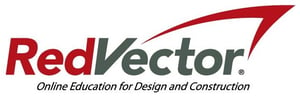Introducing New Features in Deltek Talent 16.0
The release of Deltek Talent 16.0 has offered users even better functionality further improving firm workforce productivity. This latest version of Deltek Talent was created with the intention of strengthening strategic partnerships and developing Human Capital Management (HCM) capabilities. Let’s take a look at some of the new features of Deltek Talent 16.0.
Talent Relationship Management (TRM)
Version 16.0’s Deltek Talent Acquisition module introduced Talent Relationship Management which helps firms stay ahead of recruiting. Firms can now create recruitment campaigns to build relationships with top talent and source for openings. This improvement allows firms to fill project positions quickly. The Acquisition module also contains workflow improvements and enhanced on-boarding features.
Core HR
Once talent is hired, the new Core HR module enables firms to more efficiently manage employee records. Project-based businesses are constantly changing and there are shifts in workforce expectations. As part of the 16.0 release, there are newly added fields providing the ability to process hires, rehires, terminations and job changes. Using this automated process, there can be more focus on HCM within projects that helps with strategic planning.
Continuous Goal Management
Employee engagement and retention is always a top concern for firms. With the new continuous goal management feature in 16.0, you can set and manage goals separate from the appraisal process. This change significantly simplifies the goal writing process requiring less time. There is also the option of no score appraisals and comments can be tracked. Giving employees the consistent and frequent ability to meet set goals is important to keep them engaged.
Learning Requirements
Deltek Talent 16.0 incorporates the Learning module which lays out course and curriculum deadlines, recurrences and deadline offset options. There is a new two-level process that replaces CEUs allowing for flexibility on a per course basis. Additionally, Deltek has partnered with Red Vector for e-learning content which elevates performance for project-based businesses. Firms are able to track training and development in one place. There are 130+ courses available covering project management, leadership and HR issues.
Enhance the Whole Employee Life-cycle
Deltek Talent 16.0 offers new features that support the entire employee life-cycle. From sourcing the best talent to tracking human capital per project, to ensuring project managers are always learning and engaged, this new release fits the bill. Ready to see this improved functionality in action?






 Compensation can directly impact the engagement and productivity of your talent. Without engaged talent, project-based firms will have a difficult time delivering successful projects. Retaining quality talent is a necessity to firm success so a well-planned compensation strategy is crucial. Let’s look at some components of an effective compensation strategy.
Compensation can directly impact the engagement and productivity of your talent. Without engaged talent, project-based firms will have a difficult time delivering successful projects. Retaining quality talent is a necessity to firm success so a well-planned compensation strategy is crucial. Let’s look at some components of an effective compensation strategy.
 Acquiring top talent for project-based businesses is a necessity. With the best teams in place, projects are run more efficiently, completed timely and ultimately profitable. While getting these key players on board is crucial, keeping them inspired and engaged is just as significant. If your firm incorporates career paths as part of its HR Talent Management strategy, then employee development becomes a priority and retention remains high.
Acquiring top talent for project-based businesses is a necessity. With the best teams in place, projects are run more efficiently, completed timely and ultimately profitable. While getting these key players on board is crucial, keeping them inspired and engaged is just as significant. If your firm incorporates career paths as part of its HR Talent Management strategy, then employee development becomes a priority and retention remains high.

 If I were to ask you which is more important to a successful business, the employee or the client, what would you answer? It's a tough call and either choice could be right depending on your circumstance. However, I would argue the employee is more important to ensuring a company is successful because great employees attract and keep great clients. So then why aren’t we investing more in our employees, and more importantly, how do we attract and keep great employees? The answer lies in mapping the employee journey.
If I were to ask you which is more important to a successful business, the employee or the client, what would you answer? It's a tough call and either choice could be right depending on your circumstance. However, I would argue the employee is more important to ensuring a company is successful because great employees attract and keep great clients. So then why aren’t we investing more in our employees, and more importantly, how do we attract and keep great employees? The answer lies in mapping the employee journey.